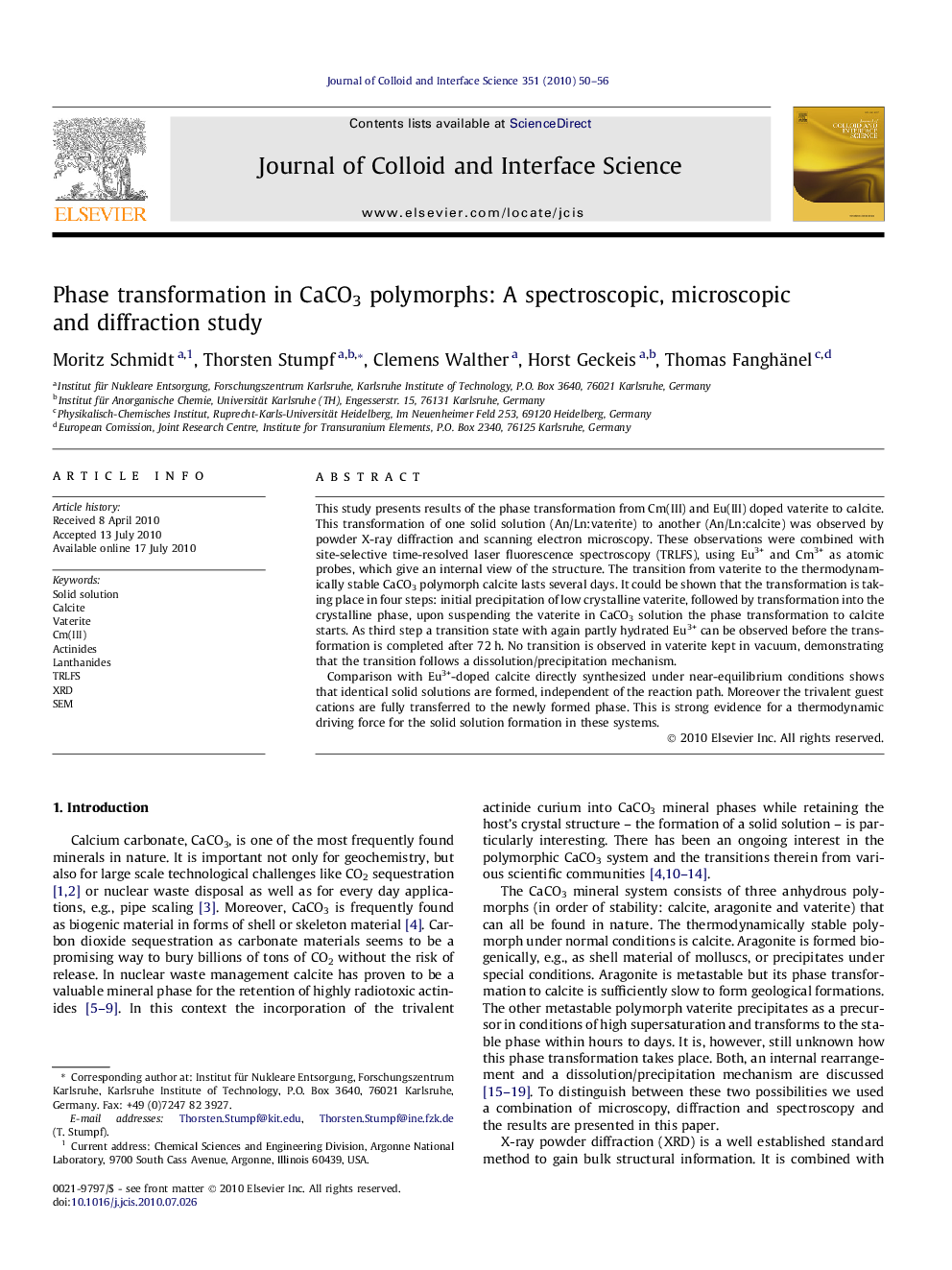| Article ID | Journal | Published Year | Pages | File Type |
|---|---|---|---|---|
| 609016 | Journal of Colloid and Interface Science | 2010 | 7 Pages |
This study presents results of the phase transformation from Cm(III) and Eu(III) doped vaterite to calcite. This transformation of one solid solution (An/Ln:vaterite) to another (An/Ln:calcite) was observed by powder X-ray diffraction and scanning electron microscopy. These observations were combined with site-selective time-resolved laser fluorescence spectroscopy (TRLFS), using Eu3+ and Cm3+ as atomic probes, which give an internal view of the structure. The transition from vaterite to the thermodynamically stable CaCO3 polymorph calcite lasts several days. It could be shown that the transformation is taking place in four steps: initial precipitation of low crystalline vaterite, followed by transformation into the crystalline phase, upon suspending the vaterite in CaCO3 solution the phase transformation to calcite starts. As third step a transition state with again partly hydrated Eu3+ can be observed before the transformation is completed after 72 h. No transition is observed in vaterite kept in vacuum, demonstrating that the transition follows a dissolution/precipitation mechanism.Comparison with Eu3+-doped calcite directly synthesized under near-equilibrium conditions shows that identical solid solutions are formed, independent of the reaction path. Moreover the trivalent guest cations are fully transferred to the newly formed phase. This is strong evidence for a thermodynamic driving force for the solid solution formation in these systems.
Graphical abstractThe transformation of a Ln/An:vaterite solid solution into a Ln/An:calcite solid solution was observed by powder X-ray diffraction, scanning electron microscopy and site-selective time-resolved laser fluorescence spectroscopy (TRLFS), using Eu3+ and Cm3+ as atomic probes.Figure optionsDownload full-size imageDownload high-quality image (83 K)Download as PowerPoint slideResearch highlights► An/Ln:calcite solid solution system characterized by microscopic and spectroscopic methods. ► Eu3+ and Cm3+ uptake by vaterite and complete transfer into calcite. ► Path-independent behavior indicates a thermodynamic driving force.
